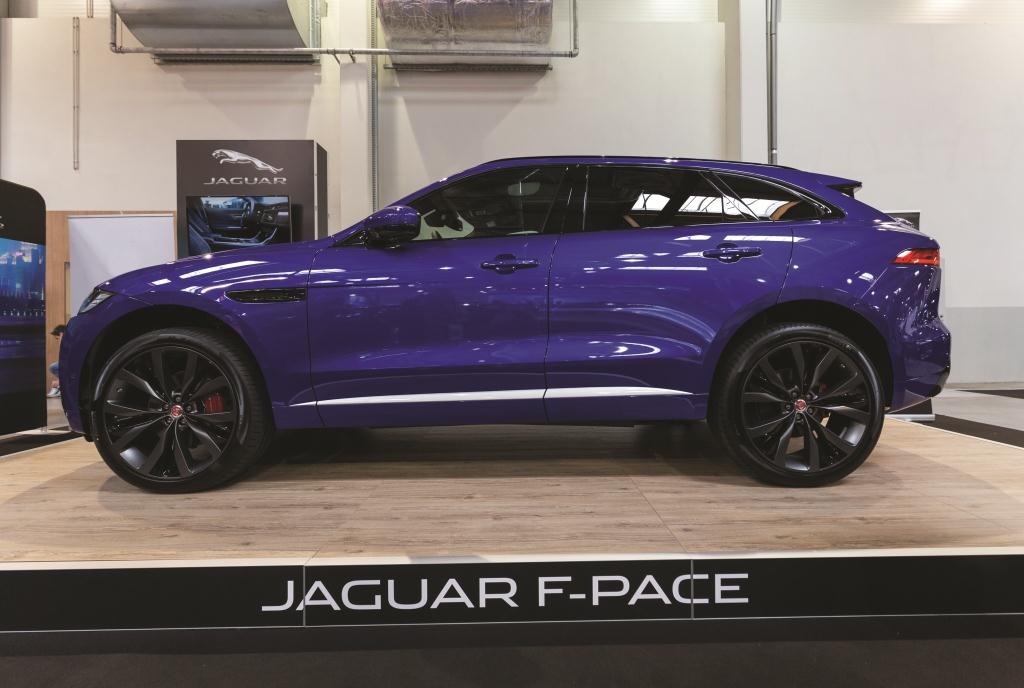One would do a double-take on Jaguar Land Rover’s decision to launch their first-ever Jaguar SUV on the volcanic island nation of Mauritius. The island’s claim to fame is its perfect white sand beaches, colorful coral reefs, luxury resorts and vast expanses of sugarcane. With about 1.3 million people, this picture-perfect getaway has everything going for it except market size. So what did Jaguar Land Rover see that other car makers are missing?
Mauritius sits in the middle of the triangle that connects Asia, Africa, and Australia. The small player has been selling this convergence point to position itself as the main conduit of trade between the three regions. At the backend, government reforms over the last three decades have ushered in economic policies that are increasingly friendly to investors. Political stability has supported growth, which surged to 3.7% in 2015 and is projected by the African Development Bank to touch 3.8% this year, at a time when many bigger economies are shrinking. The island has moved into lead position in Africa with its 46th ranking out of 140 economies in the latest edition of the World Economic Forum’s Competitiveness Report. This stellar economic performance has earned Mauritius the title of “Africa’s first tiger”. With strong economic fundamentals, Mauritius is the perfect cocktail of business and lifestyle. But can the Mauritians afford the luxurious life that the island has on offer?

The 2016 Wealth Report is annual appreciation of the size and growth prospects of high-net-worth individuals (HNWIs) in Africa. Mauritius tops the rankings of the report as home to the richest population in Africa, with the average wealth of $21,700 per person. The island’s people are significantly wealthier than the average South African, with a per capita average wealth of $10,300, and Zimbabwe on the last rung with an average of $200 per person. According to the report, the wealth is supported by secure property rights, a vibrant financial sector, and the migration of a large number of wealthy individuals to the sun and sand of Port Louis and other emerging cities in Mauritius. So the fit of a launching a new luxury vehicle into a market already growing in the luxury market and teaming with HNWIs makes perfect sense. The big question was whether going into untrodden SUV territory was the right move for Jaguar?
Throughout the history of Jaguar, the idea of an SUV has either never crossed the minds of all the teams in the company since 1922 or the idea has been crushed every time it reared its head. But, with SUVs expected to account for every five new car sales by 2020, even Jaguar realized that it was time to venture into unknown territory.
Loading...
The F-Pace was launched in Port Louis in an all-white-clad gaggle of top celebrities; the most influential, and affluent of Mauritius. The mid-size SUV is heating up the competition and looking to steal market share from dominant SUV players, like BMW and Porsche, while also not upsetting sister company Land Rover. The F-Pace will be going head-to-head with the Range Rover Evoque, Audi Q5, Mercedes GLC and Porsche Macan.
The F-Pace is taking a bite at the market at an aggressive entry level price of $50,000, which will get you a 2.0-liter diesel engine, rear-wheel-drive and a manual gearbox. An eight-speed automatic will burn a $55,390-hole in your pocket. The R-Sport package has sportier design elements and 19-inch alloy wheels. For bigger engines, 3.0 liters start at around $75,000. Several of the guests at the glittery launch mentioned that they had been on the waiting list for the F-Pace for serval months and found the price competitive.
On the inside, the F-Pace has drawn inspiration from the XF and XJ family members. The screens and console are easy to navigate. Every F-Pace gets a standard eight-inch touchscreen in the center console, with further infotainment options available. My favorite functionality was the Wi-Fi connectivity that can connect up to eight devices.

The spaciousness of the F-Pace cannot go unnoticed. With well-thought-out hidden nooks for your handbag, cellphone, and sunglasses, it’s every woman’s dream. The cabin space is more than generous, with an almost flat roofline allowing passengers at the back to be as comfortable as those in the front. The F-Pace has built in practicality with sizeable boot space at 605-liter carrying capacity which, with folded seats, can extend to 1,740 liters. The panoramic sunroof allowed us to take in the light, sounds and splashes of color as we drove through Port Louis.
The F-Pace shows the evolution that the Jaguar Land Rover brand is undergoing. The car is young, sexy, and attractive. Jaguar’s iconic big cat emblem has also been overhauled for a younger look and feel. With Africa’s richest increasingly getting younger, increasingly open-minded, and daring, it makes perfect sense why Jaguar has taken on Africa’s Tiger in the Indian Ocean.
Loading...
